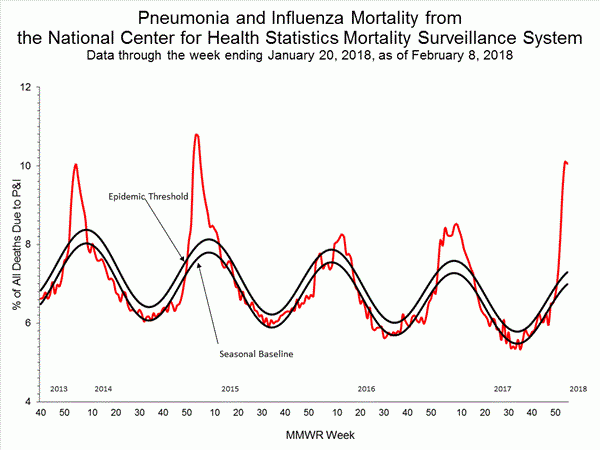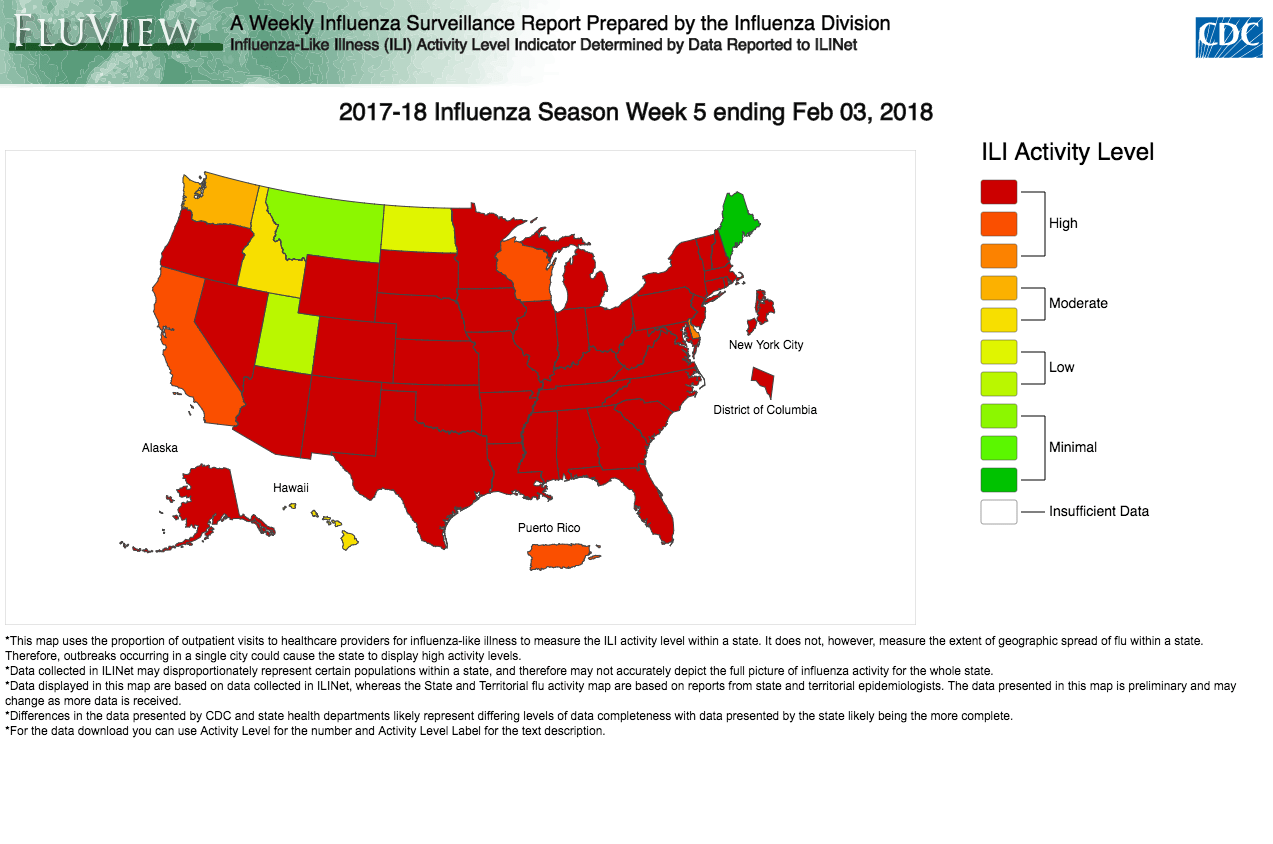As you probably already know if you live almost anywhere in the United States, this seasonal flu season is shaping up to a bad one, with a growing number of flu deaths being reported. Apart from early reports on how to prevent the flu with tips like washing your hands and protecting your immune system, the coverage on the flu this year is much more dismal than in recent memory.
Numbers from the Centers for Disease Control and Prevention tell a frightening story. During the week ending on Feb. 3, for every 10 deaths in the U.S., one of those deaths was caused by flu or pneumonia. That means that there were over 4,000 in a week, according to the CDC and Bloomberg.

CDC via Bloomberg
This flu season has been the worst in almost a decade. It hasn't been since the swine flu outbreak in 2009 that this many people have sought treatment at a hospital for flu symptoms. Anne Schuchat, acting director for the CDC, noted the high hospitalization rates: 7.7 percent of visits to health care providers have been for flu-like symptoms and out of every 100,000 people, 59.9 percent have been hospitalized for flu or pneumonia.
Flu activity has spread across the entire U.S. In California, 36 people under the age of 65 died from severe influenza during the first week of February, the highest one week death toll in the state so far this season.

CDC via Bloomberg
So far, 63 children have died from the flu this season. 80 percent of those children did not get the flu vaccine and about half of them had no underlying health condition. The predominant flu strain this season has been H3N2, which was also the primary strain in the 2014-2015 flu season. That season resulted in 56,000 flu-related deaths, 710,000 patients hospitalized and 16 million people who visited a doctor or hospital for treatment.
And we still have weeks left to go in this season. The average flu season lasts 16 weeks, though they can last up to 20 weeks. That means, if you haven't gotten your flu shot, officials at the CDC says you should do so now. Even if it's not quite as effective against the H3N2 strain of influenza, it does offer protection. It can lessen the duration of the virus and weaken the symptoms.
And for kids, the flu shot is the best way of protecting them. A study by scientists published last year in Pediatrics concluded that, "Most influenza-associated pediatric deaths occur in unvaccinated children." Getting the flu shot also means that you're protecting the high-risk people around you who can't get a flu shot either because of age or another medical condition.
Flu Symptoms

Flu symptoms tend not to change from year to year, though they can show up differently in different people. You're more likely to have the flu if you:
- Have a fever or are feeling feverish/chills
- Have a cough, sore throat, runny/stuffy nose
- Are achy or have a headache
- Are fatigued in general
- Have vomiting and diarrhea (more common in children)
Most people who suffer from the flu will get better with rest and care. However, it's better to seek treatment for worsening flu symptoms early, especially for children. If your child isn't drinking, is lethargic, has chest pain or difficulty breathing after a normal activity, call your doctor. If they've been getting better then suddenly get worse again, that could be a sign of a secondary bacterial infection and you should take them to the hospital immediately.
You can help prevent the spread of the virus by washing your hands, keeping bedding clean, and wiping off surfaces (including things like remote controls and light switches).




